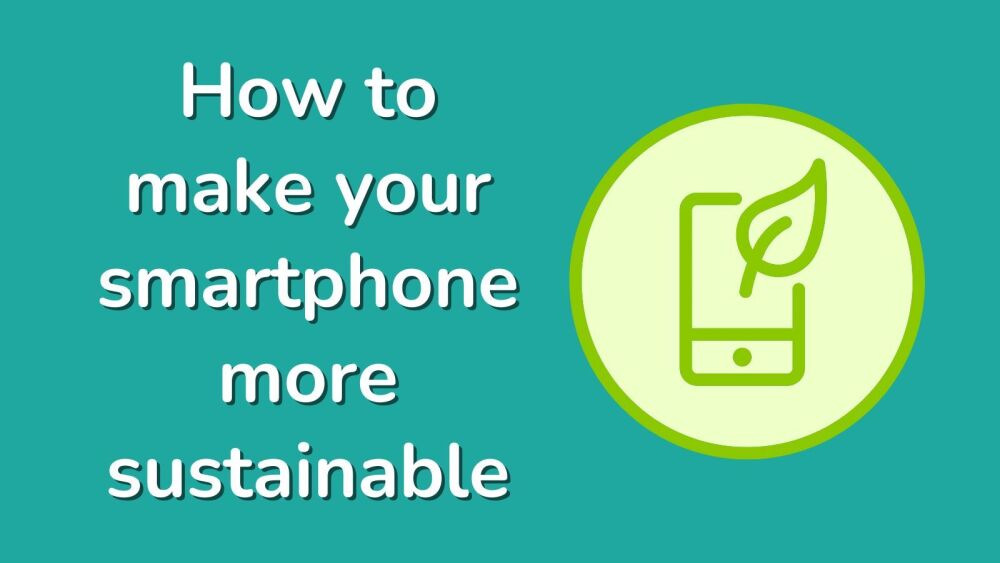How to make your smartphone more sustainable
Posted on
Mobile devices might have transformed the modern world, but like so many other things, they come with an ecological price tag. Batteries and circuits require the use of synthetic materials that do not degrade in the ground and could, in some cases, be toxic to the environment for many years.
Greening your electronics, therefore, is one of the most important things that you can do to look after the natural world. But how?
The best approach is recycling. Here you trade in your mobile phone, usually for cash. Then someone will professionally refurbish it, bringing up to the point where they can sell it on again to somebody else.

The eco-friendly benefits of smartphones over the old system
Smartphones are, in many ways, an essential technology for making human activity on Earth more sustainable. While the handsets themselves might necessitate the use of rare earths and compounds that don’t degrade, they actually help to “dematerialise” the consumer economy.
Think for a moment about the number of devices that people no longer have to buy. You don’t need a separate camera - that’s on your smartphone. You don’t need a radio or an MP3 player - you get those on most devices. You don’t need a speaker or a GPS, books, or media of any form. Smartphones save all those resources, cutting the resource footprint of the average person dramatically. The more we digitise, the better the situation becomes.
Smartphones may be expensive, but they are multi-use devices. They’re essentially a mini computer, your newspaper, your watch, your camera, your music storage and player, your satnav, recipe books and of course they can make phone calls too! Nowadays they are even your wallet!
How to make your smartphone more eco-friendly
One of the biggest smartphone accessories is the phone case. Every year well over 1.5 billion phones are sold. But what makes this fact so bad is that 80% of these smartphones will end up with a phone case.
Phone cases are used to protect your phone, but they do very little to protect the planet. The problem is the materials phone cases use can actually be pretty damaging to the environment, especially when they’ve been chucked away.
Most phone cases are made with some sort of plastic product, which by now, you probably understand isn’t good for the environment. Plastic leaches into water sources and soil polluting anything that gets in its way.
Eco-friendly phone cases recently hit the market as an attempt to combat the damage traditional phone cases are causing.
There’s a wide range of eco-friendly phone cases on the market. But more importantly, they come in a vast range of materials, including:
- Wood
- Cork
- Bamboo
- Bioplastic
And that’s just a few of the most common materials. Other manufactures have decided to use recycled materials like skateboards and ocean plastic. It’s these small but innovative ideas that can make a huge change.
The best thing about some of these materials is they offer natural protection to your phone. For example cork. Not only does cork have water-resistant qualities, but it also has natural shock protection.
These two qualities make cork a great material for a phone case. But what makes it better is it can naturally biodegrade.
Why recycling smartphones will take off
With that said, smartphones aren’t entirely good news. While they prevent the consumption of resources, they also create issues around disposal. Even state-of-the-art processes still struggle to make used handsets safe for landfills.
The best solution, for now, is recycling. Most old handsets aren’t at the end of their usable lives. Almost always, the on-board circuitry, sensors and screen technology are perfectly intact. The problem is usually device slowdown because of disk fragmentation and battery degradation. If you can reverse those two things, you can generally create a viable handset that performs as new.
There’s now an entire business model based around this very idea. You send your device off in the post, somebody takes it apart and replaces the parts that need swapping out, and then sells it on to another person for a much lower price than new.
It is an exciting concept and one that is likely to accelerate in the future. Currently, device performance progresses leaps and bounds every year. Over the next ten years, however, researchers believe that the rate of progress will slow. Manufacturers are reaching the limits of Moore’s Law, and making devices more powerful is going to require a paradigm shift. Making the transition to a new form of computation, therefore, will likely take several years.
Because of this, the market for second hand devices is likely to expand. Why invest in a brand new handset if you can get similar performance from used equipment at a much lower cost?
Recycling, therefore, is the simplest way to make your electronics sustainable. It keeps them out of landfill and protects the environment. You can win both ways. You get a cheaper handset than buying new and you also get to trade in or sell your used handsets. Even broken smartphones can reach staggering prices as people buy them for the parts or to refurbish. I once sold a smartphone that wouldn’t even turn on, after I dropped it in water, for almost £200!
No-one need ever throw used electronics, especially smartphones, into the bin.

